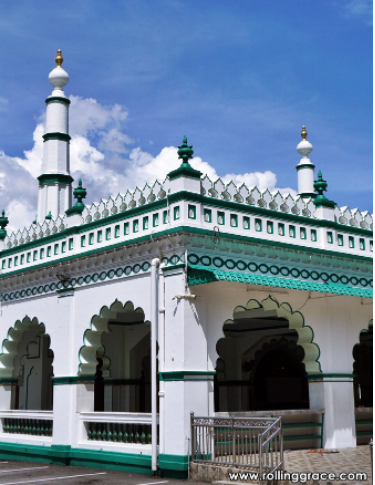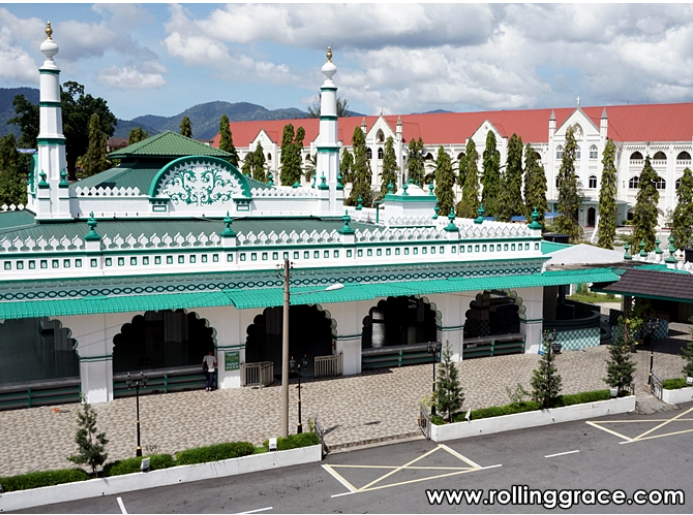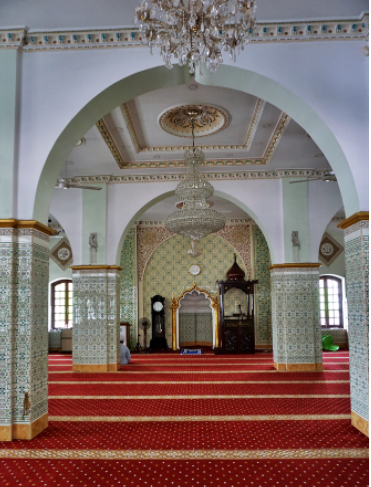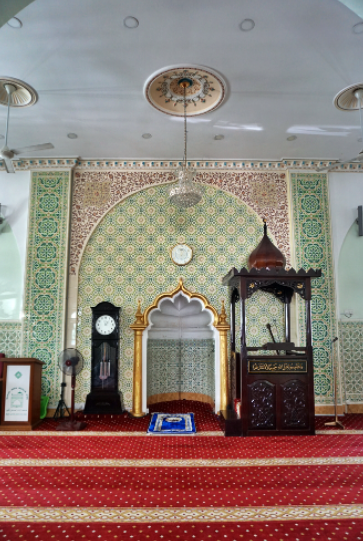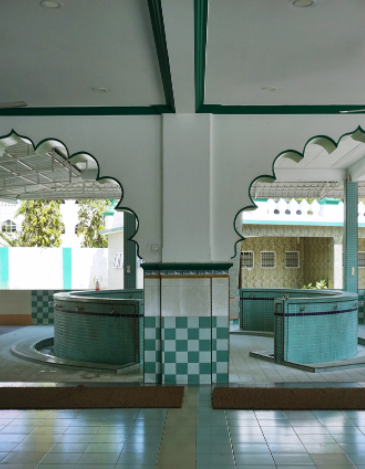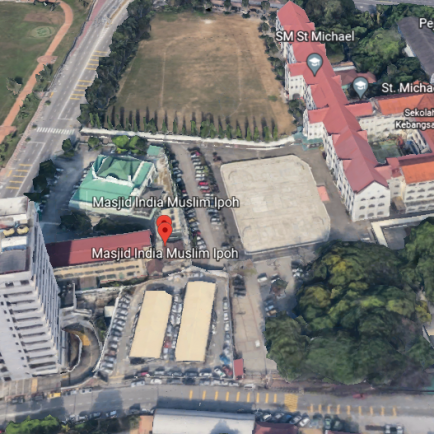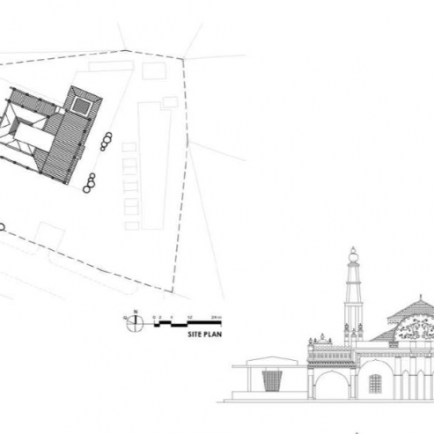India Muslim Ipoh Mosque
History
India Muslim Ipoh Mosque was built in 1905 by Indian laborers brought in as labor by a affluent Indian Muslim head honcho by the title of Shaik Adam Mohammad Ghaus. He was the founder of Kinta Ice Works and Kinta Aerated Water Factory, and was accepted to be the sole provider of ice within the town at that time.
Urban and Architectural
The frontal area of the prayer hall houses the mihrab or a chamber niche that is directed towards Mecca - which is the center direction for prayer. A wooden pulpit or mimbar is placed on the right where the leader of prayer delivers his sermon.
As the mosque caters to the Indian Muslim devotees, the sermon is conducted in Tamil. A tall, grandfather clock on the left side of the mihrab tells the time through the round, wall mounted clock built at the top.
At the left corner, visitors can find a medium-sized table and a cabinet that are used to display plaques and commemorative items received by the mosque. The natural sunlight brightens the mosque during the day through its long, square-trimmed framed window.
The place for ablution is typically built at the back. The same rules apply at Masjid India Muslim Ipoh where the semi-circular walls with mounted water taps are located at the very end just outside of the prayer hall.
Description
The mosque was built by Indian laborers using conventional building strategies learnt in their country to make a mosque in a Mughal building fashion reminiscent of the awesome fortifications found within the Northern Indian State of Rajastan. The mosque is square with balustrades on the roof which see comparable to fortifications, driving numerous individuals to liken the plan to that of a castle. This can be a well kept up building and Muslim guests who have gone interior to supplicate have detailed this can be a inviting and faultlessly clean mosque.
References
https://www.rollinggrace.com/2020/09/historical-masjid-india-muslim-ipoh-perak-mosque-malaysia.html
https://malaysialife.org/masjid-india-mosque-in-ipoh/
Aziz, A. A., 2016. MASJID - Selected Mosques and Musollas in Malaysia, ATSA Architects Sdn. Bhd.
Details
Location
Jalan Seenivasagam, 30450 Ipoh, Perak Darul Ridzuan
Worshippers
800
Owners
Shaik Adam Mohammad Ghaus
Architect Name
Year of Build
1908
Area
827
Drawings
Map
History
India Muslim Ipoh Mosque was built in 1905 by Indian laborers brought in as labor by a affluent Indian Muslim head honcho by the title of Shaik Adam Mohammad Ghaus. He was the founder of Kinta Ice Works and Kinta Aerated Water Factory, and was accepted to be the sole provider of ice within the town at that time.
Urban and Architectural
The frontal area of the prayer hall houses the mihrab or a chamber niche that is directed towards Mecca - which is the center direction for prayer. A wooden pulpit or mimbar is placed on the right where the leader of prayer delivers his sermon.
As the mosque caters to the Indian Muslim devotees, the sermon is conducted in Tamil. A tall, grandfather clock on the left side of the mihrab tells the time through the round, wall mounted clock built at the top.
At the left corner, visitors can find a medium-sized table and a cabinet that are used to display plaques and commemorative items received by the mosque. The natural sunlight brightens the mosque during the day through its long, square-trimmed framed window.
The place for ablution is typically built at the back. The same rules apply at Masjid India Muslim Ipoh where the semi-circular walls with mounted water taps are located at the very end just outside of the prayer hall.
Description
The mosque was built by Indian laborers using conventional building strategies learnt in their country to make a mosque in a Mughal building fashion reminiscent of the awesome fortifications found within the Northern Indian State of Rajastan. The mosque is square with balustrades on the roof which see comparable to fortifications, driving numerous individuals to liken the plan to that of a castle. This can be a well kept up building and Muslim guests who have gone interior to supplicate have detailed this can be a inviting and faultlessly clean mosque.


